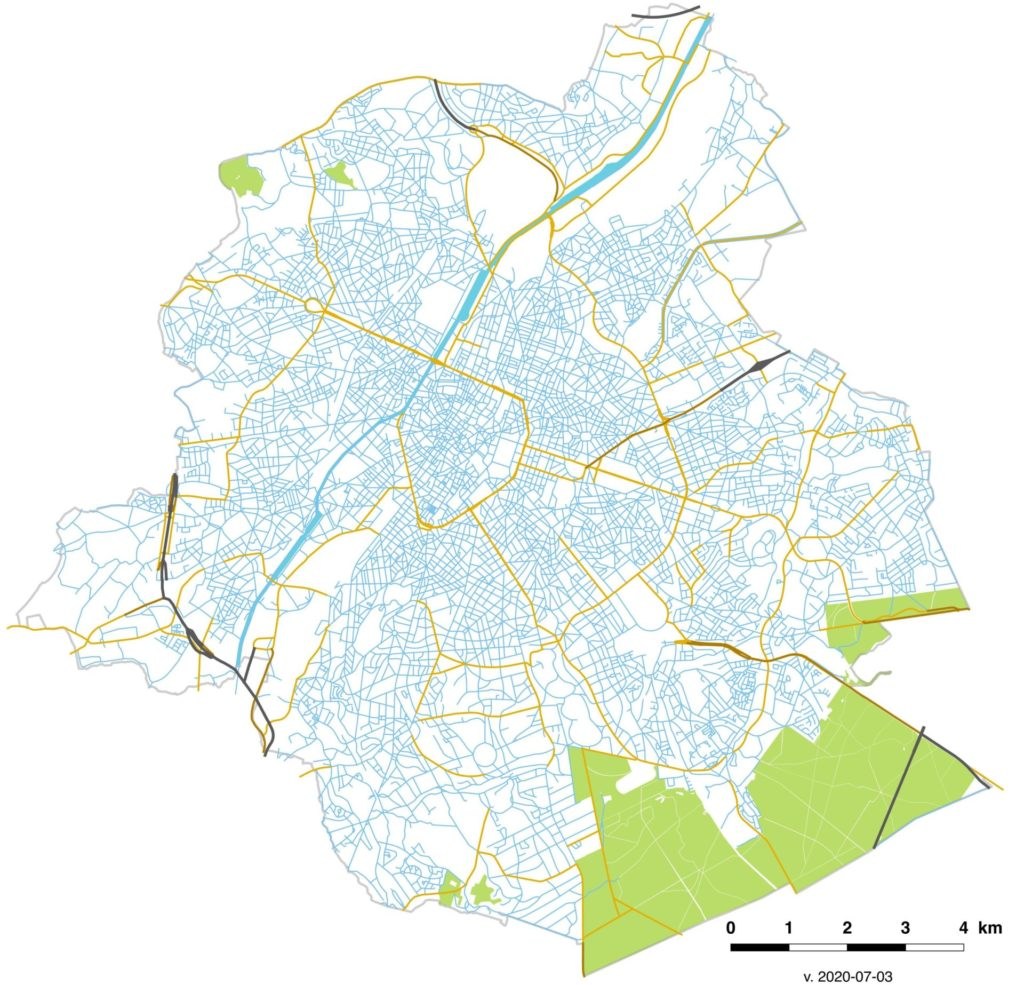The Brussels Region has issued its plans for creating a 30 km/h zone in the whole region – with some exceptions.
The new plan is a reversal of the normal situation in the region, whereby the region is in general a 50km/h zone, with exceptions where a reduced limit of 30 is in force.
From January, that is turned on its head: the vast majority of streets in the city will have a speed limit of 30 km/h. Some main arteries will have a 50 km/h limit. And a very few roads linking to motorways or heading out across the regional border into Flanders will have speed limits of 70 to 120 km/h.
The map shows the city as a patchwork of blue streets (30 km/h) covering the entire region, which is divided from north-east to south-west by a solid blue stripe, which is the canal. Within the central pentagon of the city will be those streets that remain with a speed limit of 20 km/h, which are not shown separately.
Here and there are patches of green, principally the Bois de la Cambre and the Sonien Forest, the Laeken Park and the Scheutbos in Anderlecht, and other smaller green areas like the Cinquantenaire and Josaphat parks.
In very few places there are brown roads, for example alongside the Laeken Park in the north, the E411 from the Boulevard de la Triomphe to the Ring and the N281 from Auderghem to the Flemish border. These are roads where the speed limit is 70 km/h, and in one case, the E40 from the Reyers tunnel towards Flanders, a full-blown motorway.
Black stretches are parts of the Ring that straddle the regional border and cross Brussels territory.
Then there are the yellow roads, where the 50km/h limit applies.
These are major arteries: the inner ring-road, the Leopold II tunnel, the N290 all the way from Westland Shopping in Anderlecht past the Basilique in Koekelberg to the Ring at Jette/Wemmel, the Avenue de Tervuren from Cinquantenaire to Vier Armen/Quatre Bras.
For Brussels mobility minister Elke Van den Brandt (Groen) the plans mean making Brussels a safer city.
“Today is an important day for Brussels,” she said. “We are taking a major step towards safer traffic. In Grenoble, a general zone 30 has caused 25% fewer road casualties in four years. That is the direction we want to take. I want to thank the municipalities and Brussels Mobility for their very thorough cooperation, and the excellent result.”
But mobility experts stress that a zone 30 can only work if there are the necessary control mechanisms and infrastructure adaptations. Van den Brandt has promised those will come, including three million euros for the communes for improvements to safety, and eight million for repairs to regional roads.
“Not all of those works will be finished by early 2021, but we will start with the most important,” said a spokesperson.
Maps showing the current situation and the situation from January 2021 can be found here.
Alan Hope
The Brussels Times

